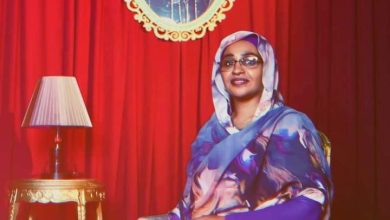Daw Al Beit : A Memory to Forgetting

Alsir alsayed
Among the plays that represented a real addition and constituted a qualitative transformation, and was even the most distinguished, comes the play (Daw Al Beit ) Light of the House, which embodied a mobilization of the maximum energies of creativity and beauty. This theatrical performance brought together, in a rare creative state, the poets Mohamed Mohi El-Din, who prepared the text of the play based on Tayeb Salih’s novel. Bandar Shah – Dhaw Al-Bayt, Al-Qadal, Hamid, Qasim Abu Zaid, and Yahya Fadlallah, who wrote the poems, and the artist Mustafa Sayyed Ahmed, who composed and performed them. It also included major actors. Many circumstances at that time prevented them from participating in the large performances presented on the stage of the National Theater or the Friendship Hall Theater, and we mention here. Specifically, the distinguished actor Mohamed Abd al-Rahim Qarni and the members of the “Sadeem Theater Group” themselves. In addition, this show was able to bring back to the theater, after a long absence, a great artist, the writer and actor Tayeb al-Mahdi. In this show, Mustafa Sayed Ahmed sang as he had never sung before. He sang for the poet Hamid, and he had not met him face to face, as Qasim told me. He sang “O rain, glory of fire,” and he also sang for him, “Neither the ancient Nile, oh he, nor yana,” and he sang to Al-Qadal, “You will rise, O our house, the house of clay… for a day’s work.. Shrayyat a day,” and Lehia and Qasim sang, “A time has passed and a time has come.. No, the morning has passed, like the morning has come.”..all this amazing creative universe, the singer’s voice, the dancing, the acting, the darkness, the light, and the stories, directed by the show’s director, Mr. Qasim Abu Zaid Ahad. The most important makers of the new and different theatrical image in Sudan,particularly in the era of the eighties of the last century, and one of the established pillars in the creation of the experience of the Al-Sadeem theatrical group, he directed it in a harmonious theatrical language that anchored the show or almost on the shores of what can be described as “magical realism,” giving this show the merit of being very close to Embodying the world of the novel, but rather the world of Tayeb Salih… “The Play of Daw Al Beit was presented on the stage of the Friendship Hall in Khartoum, the third day of Eid al-Fitr in the year 1985 AD, for a period of 22 days. It is considered the first attempt of the Sadeem Theater Group “as an independent group” to enter the world of private theater with support A generous friend of the group, the deaf brother Abbas, describes this show as having moved the theatrical show to great productive heights. It is sufficient to point out here that the number of actors in it exceeded thirty male and female actors, and it is attested that he used methods that were not familiar in Sudanese theatrical presentation at that time, specifically in The use of lighting and the use of decorative pieces, in short, in the ability to activate the “play space” by combining what is realistic and what is expressive and what is “theatrical technique” and what is “cinematic refinement”, so that this show is historically the first experience in which the capabilities of the hall stage are employed. To its maximum extent, as the director and cinematographer, Professor Mekki Sinada, testified at the time. We mention here, to sharpen our memory, that the novice actress at the time and now the star, Samia Abdullah, embodied “Fatima Bit Jabr al-Dar,” Abd al-Rahman al-Shibli, “Saeed Asha al-Bayatat,” and Abbas al-Zubair, “Saeed al-Qanouni.” Yahya Fadlallah “Al-Tahir Wad Al-Rawas”, Al-Sir Al-Sayyid “Al-Tarifi Wad Bakri”, Imad Al-Din Ibrahim “Bandar Shah”, Dakhil Allah “Bandar Shah Al-Jad”, Qarni “Muhamid”, and Al-Tayeb Al-Mahdi “Mahjoub”.



